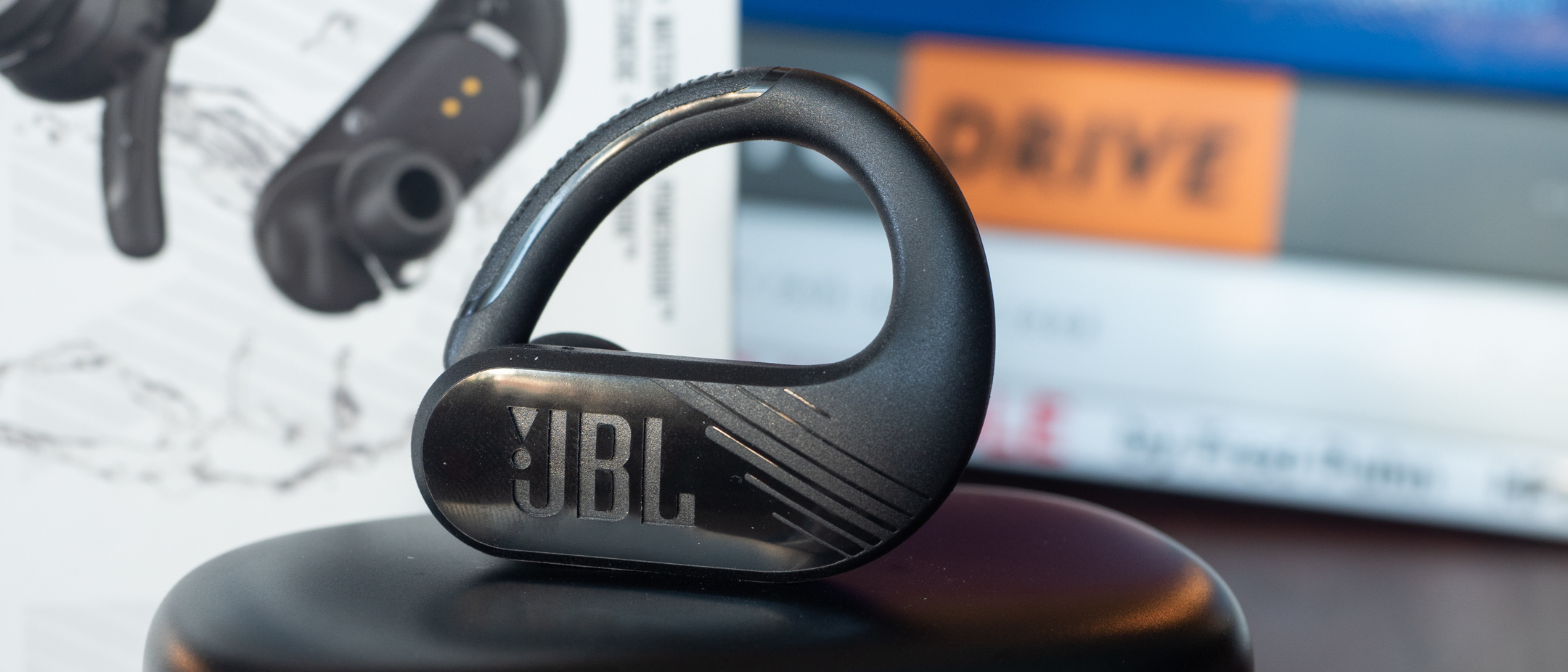TechRadar Verdict
The JBL Endurance Peak 2 will satisfy those with active lifestyles with their secure fit, in-your-face sound, and intuitive touch controls. While there are other true wireless headphones that are better all-rounders, the Endurance Peak 2 will please those looking for workout-focused headphones.
Pros
- +
Intuitive touch controls
- +
Intense sound
- +
Comfortable and secure fit
Cons
- -
Average battery life
- -
Extremely bassy
- -
Mediocre mic
Why you can trust TechRadar
30-second review
The JBL Endurance Peak 2 is the company’s latest iteration of what it thinks a workout-focused headphone should be. Building on its previous Endurance headphones like the JBL Endurance Sprint, the Endurance Peak 2 are refined, truly wireless earbuds that will please those with active lifestyles.
That said, they're an excellent pair of workout-focused headphones that don’t break the bank. For $99 (£119, about AU$215), they’re a good value for those looking for headphones that can put up with a lot of abuse. Audio quality is exciting, build quality is excellent, and they block out a ton of outside noise. While battery life and the mic are just average, they are far from deal-breakers.
Price and release date
The JBL Endurance Peak 2 are available now for $99 (£119, about AU$215) worldwide, though JBL’s Australian site doesn’t have them listed just yet.
On paper and in use, the JBL Endurance Peak 2 are a much better value than the Beats Powerbeats Pro, which are multitudes more expensive at $249 / £219 / AU$349 / AED 949. While the Beats beat the JBL in terms of earbud battery life (9 hours compared to the JBL’s 6), the Beats lose with overall battery life (25 vs 30 hours). Plus, the JBL are more rugged with an IPX7 rating vs the Beat’s IPX4.
Design
The Endurance Peak 2 are truly wireless and feature earhooks for an extra-secure fit, perfect for working out. During our testing, we could not shake the headphones loose, no matter how vigorously we moved around. They also feature a unique magnetic on/off switch, which works well to turn off the headphones immediately after you remove them or place them in the charging case.
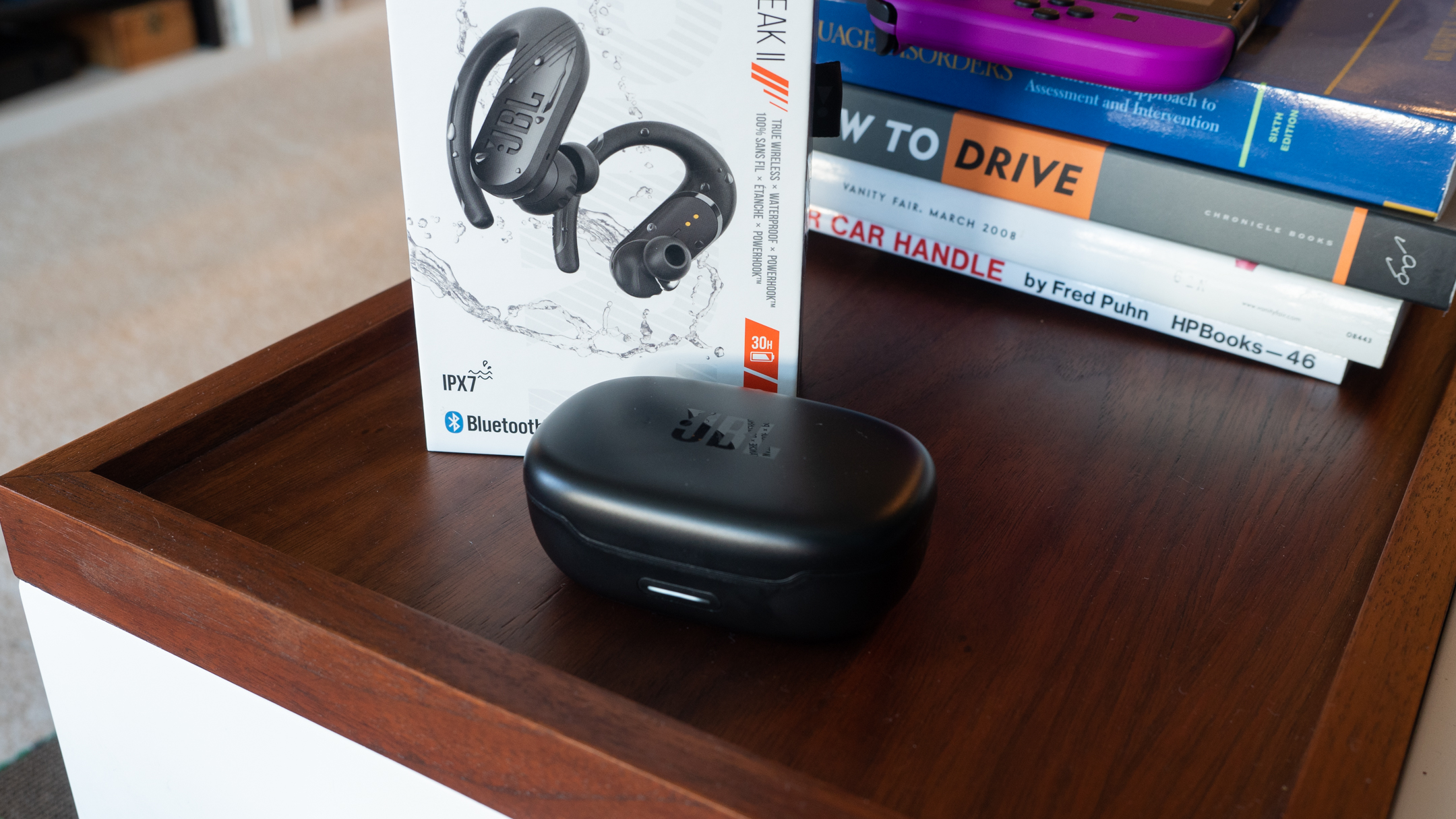
To help get the best fit, the Endurance Peak 2 comes with 3 sizes of ear tips to choose from and the mediums fit well for our ears out of the box. To get get them in place, you’ll need to hook the headphones over your ear, then twist them toward the back of your head to lock them into place. Don’t forget that last step as it creates an excellent seal, which is necessary for bass response.
As the headphones are quite bulky thanks to their hook design, so too is the charging case. While they’ll slip easily into a bag, you won’t be slipping these into your pocket next to your phone. The charging case features USB-C charging and takes about two hours to top up from empty.
Features
Since the JBL Endurance Peak 2 are designed for vigorous workouts, they’re IPX7 rated, which means the headphones can survive in up to a meter of water for 30 minutes and are protected from dust. These headphones are made to withstand abuse and you can feel it from the build quality.
When it comes to the touch controls, you can tell JBL spent time testing what works for users moving around. Physical buttons can be tough to actuate while running and moving so touch controls are preferable. The headphones have large touch areas so you don’t have to be accurate with your taps.
A single tap on the left earbud advances a track while a double tap selects the previous track. Sliding forward and backward on the right earphone raises or lowers the volume, which is easy to do while running.
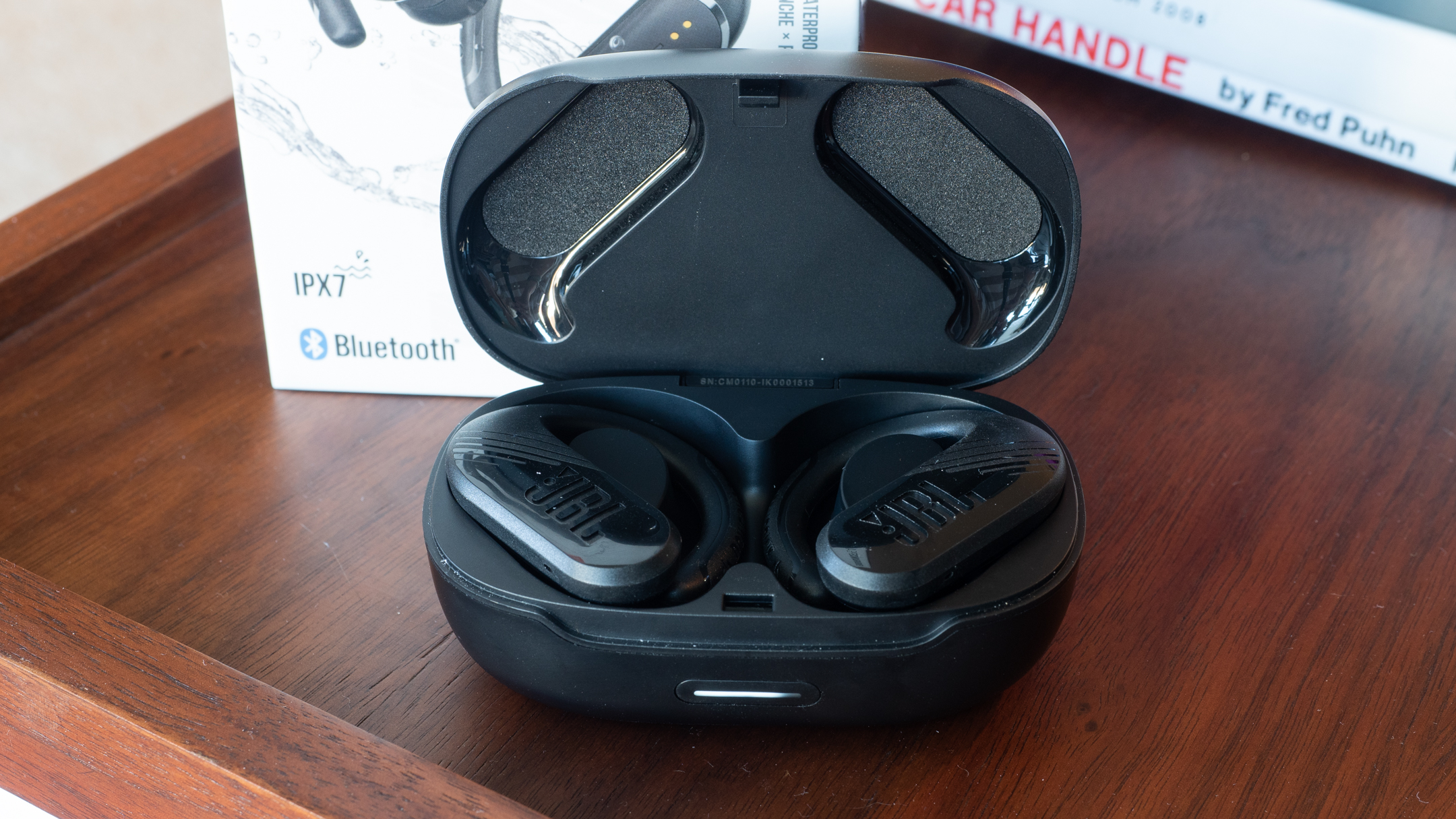
In terms of battery life, the earbuds themselves can last about 6 hours of use at medium volume, which we found accurate in our testing. The charging case adds an additional 24 hours of playback for a grand total of 30 hours before you have to top up the case.
The Endurance Peak 2 also comes with a built-in microphone for calls or using your phone’s smart assistant. Calls sound just average with our friends and family reporting that the sound is muffled compared to other true wireless headphones like the Jabra Elite 75t. The mic will work in a pinch but you won’t want to take conference calls with them.
Audio quality
Bass is the focus of the JBL Endurance Peak 2, which makes sense for the intended audience as the increased bass response helps block out ambient sounds from the street or gym and helps with the intensity of music playback.
Music sounds exciting and in-your-face with good bass impact. For genres like EDM, pop, and hip-hop, the sound quality is fun. However, other genres sound unbalanced with too much warmth.
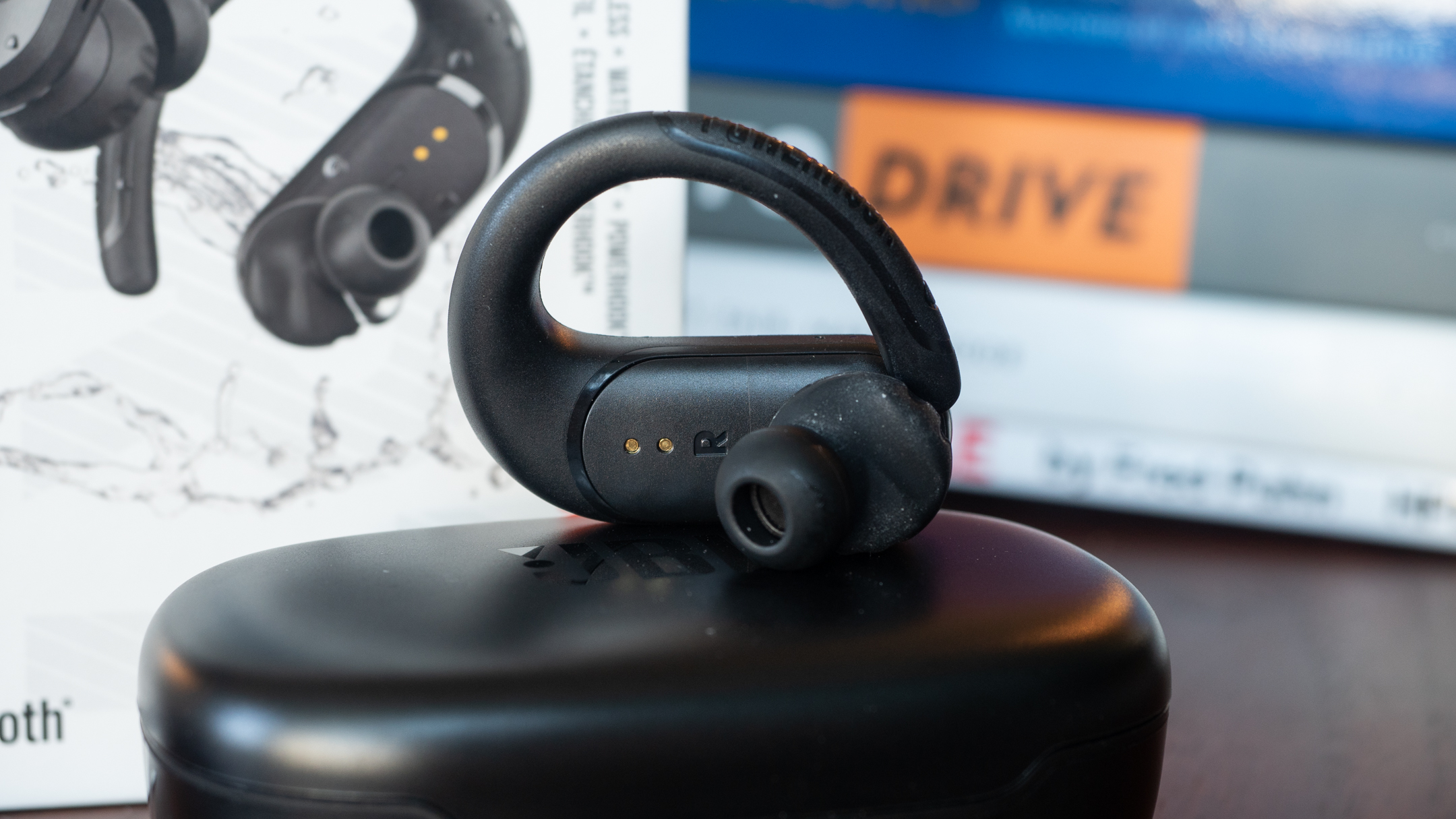
Soundstage is average, representing sound slightly outside your head but not by much. Detail is also just average and the heavy bass response bleeds into the mid range at times, creating a slightly muddy sound.
While not the most neutral headphone, the JBL Endurance Peak 2 do a good job of making certain genres more exciting, which fits its goal of being an excellent pair of workout headphones.
Should you buy the JBL Endurance Peak 2?
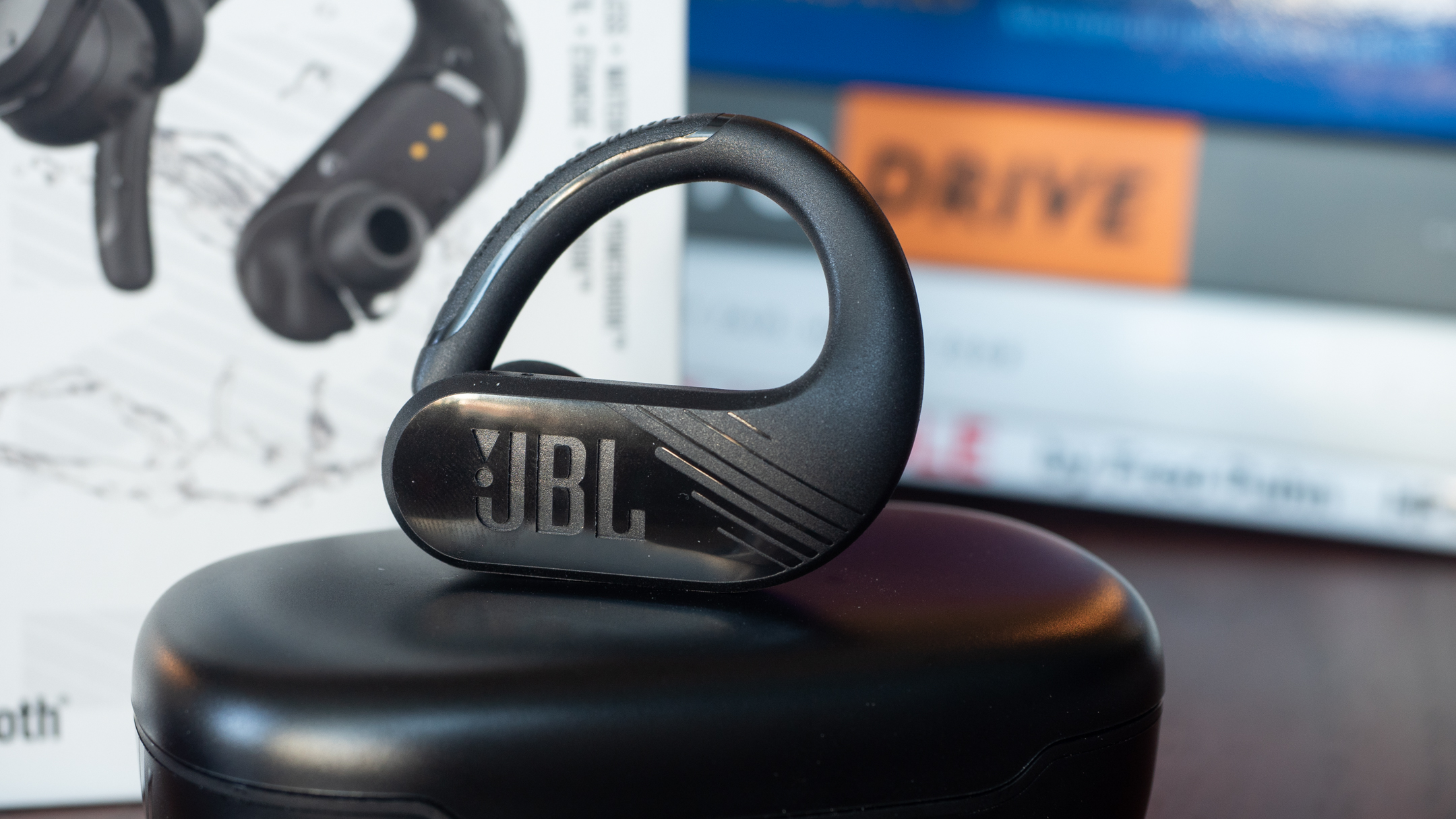
Buy them if...
You want affordable work-out focused headphones
As a purely workout-focused pair of true wireless headphones, the JBL Endurance Peak 2 work great. Their sound is good enough, the seal is strong and their IPX7 rating is class-leading.
Don't buy them if...
You want pristine sound quality or call quality
The Peak 2 are not, however, very good for taking business calls or getting the best sound quality from your music collection. The increased bass response helps block out ambient sounds from the street or gym, but the heavy bass response bleeds into the mid range at times, creating a slightly muddy sound.
- Ready to cut the cable? Here's our guide to the best true wireless earbuds
